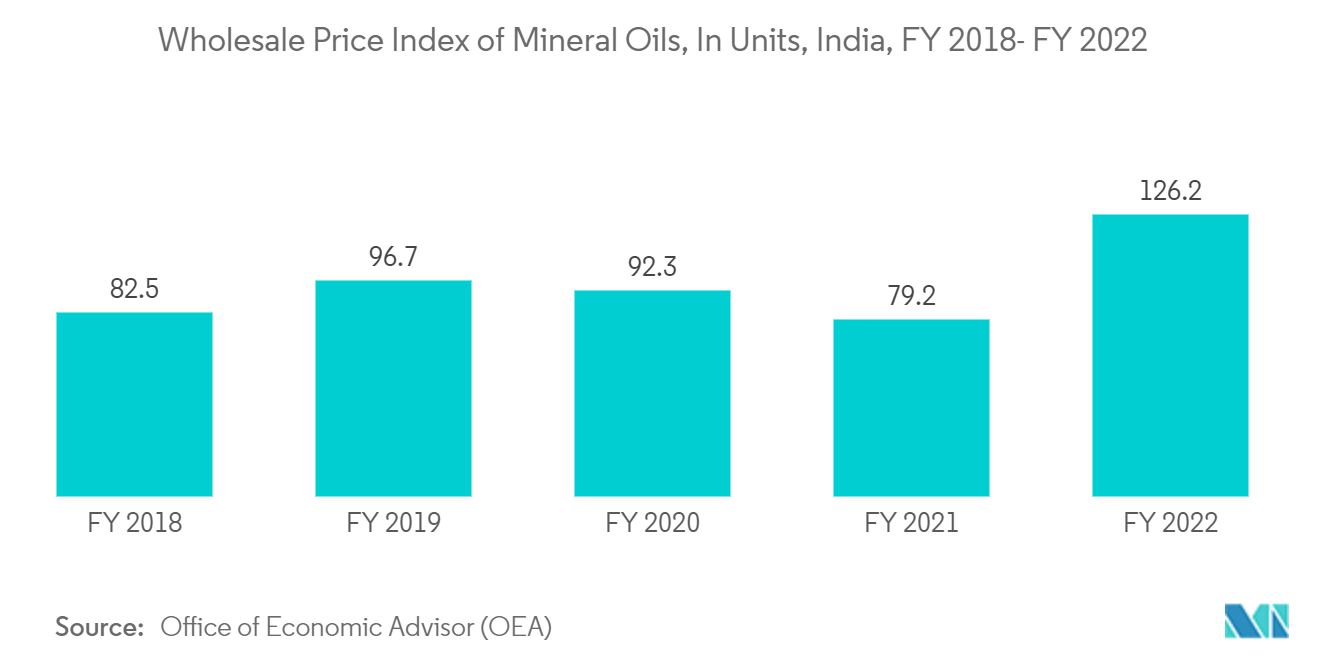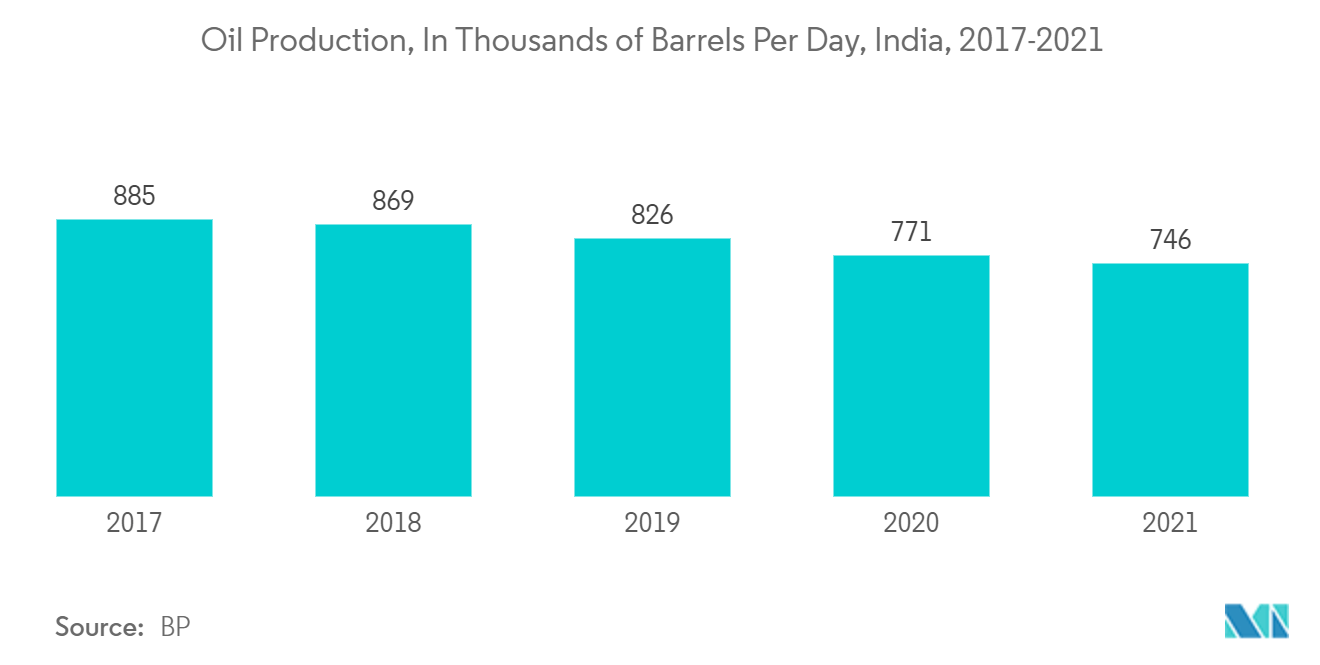Market Trends of India Thermic Fluid Industry
Rising Demand for Mineral Oil Segment
- Mineral oils, employed as a thermic fluid, are petroleum-based fluids derived from crude oil distillation cuttings. Mineral oils are isomeric mixes of paraffin or naphthene-basic hydrocarbons classified as paraffinic or naphthenic. These oils are chosen for their viscosity, influencing heat transfer capabilities and stability.
- Paraffinic mineral oils hold a higher flash point and boiling point. On the other hand, naphthenic mineral oils include better lower temperature characteristics and pour points.
- Mineral oils provide superior thermal stability at high temperatures, need less disposal and maintenance, and include a lower environmental impact. They include features such as low vapor pressure and viscosity as well.
- According to the Office of Economic Adviser of India, the wholesale price index of mineral oil in India at the end of Fiscal Year 2022 was around 126, representing a nearly 40% increase over the previous year's WPI of 79.2.
- The mineral oil demand continues to increase due to its numerous applications in various sectors, including automotive, textile, construction, industrial, medical, pharmaceutical, electronics, and consumer products. In the pharmaceutical industry, it is commonly used in infant lotions, cold creams, ointments, and cosmetics to treat and prevent dry, rough, scaly, itchy skin and mild skin irritations. Additionally, it can be used as a mild laxative for veterinary or human purposes.
- The Indian pharmaceutical industry is predicted to register at a CAGR of 22.4% shortly. According to a report by the India Brand Equity Foundation, it is expected to reach USD 130 billion by 2030. In FY22 and FY21, Indian medication and pharmaceutical exports totaled USD 24.60 billion and USD 24.44 billion, respectively. As a result, the mineral oil demand, which is crucial to the sector, will increase.
- Therefore, the abovementioned tactics are expected to impact the thermic fluid market in the coming years significantly.

Oil and Gas Segment to Dominate the Market
- Heat transfer fluids are widely employed in the oil and gas processing industry. Heat transfer fluids and systems are used in all stages of fuel extraction, transportation, refining, and recycling.
- As the oil and gas business is primarily seen in remote and difficult-to-access locations, employing heat transfer fluids with a high flash point and thermal stability is critical to reducing the explosion risk. Thermic fluids are utilized on offshore platforms for facility heating and regeneration of glycols and molecular sieves, which aids in the water removal from the natural gas generated. These fluids are used in refineries to heat column reboilers, which are used to distill oil and oil-based products.
- Thermic fluids are employed in the liquid phase of natural gas processing for dehydration, extraction, sweetening, and fractionation, which helps control temperature, maintain phase, and heat reboilers.
- Thermic fluids are also used in oil pipelines and pumping stations to adjust the oil's viscosity as it moves through the line. As a result, all of these applications in oil and gas play an essential role in boosting the need for thermic fluids.
- According to the India Brand Equity Foundation, India remained the world's third-largest oil user in 2021. Keeping this in mind, crude oil processing grew by 9% from 221.77 million tons in 2020-21 to 241.7 million tons in 2021-22. India also intends to treble its refining capacity to 450-500 million tons by 2030.
- According to Invest India, the petroleum products production in FY 2021-22 was 254.3 MMT. In addition, petroleum refinery output grew by 4.5% in January 2023 compared to January 2022. Natural gas production increased by 5.3% in January 2023 compared to January 2022.
- Several Indian-based oil and gas-generating enterprises took significant steps to reduce India's reliance on imports from other countries. For example, Oil and Natural Gas Corp. Ltd (ONGC) announced intentions in November 2021 to invest up to INR 6,000 crore (USD 800 million) in its petrochemicals business, ONGC Petro Additions Ltd (OPaL), to assist in meeting its equity requirements.
- In September 2021, Bharat Petroleum Corporation Limited (BPCL) announced plans to invest USD 4.05 billion in improving the petrochemical capacity and refining efficiency over the next five years.
- Moreover, in August 2022, BPCL announced plans to invest INR 1.4 trillion (USD 17.65 billion) in the petrochemical, city gas, and clean energy business over the next five years.
- Hence, all such trends in the oil and gas industry are expected to play an instrumental role in driving the thermic fluid market growth in the country over the forecast period.

